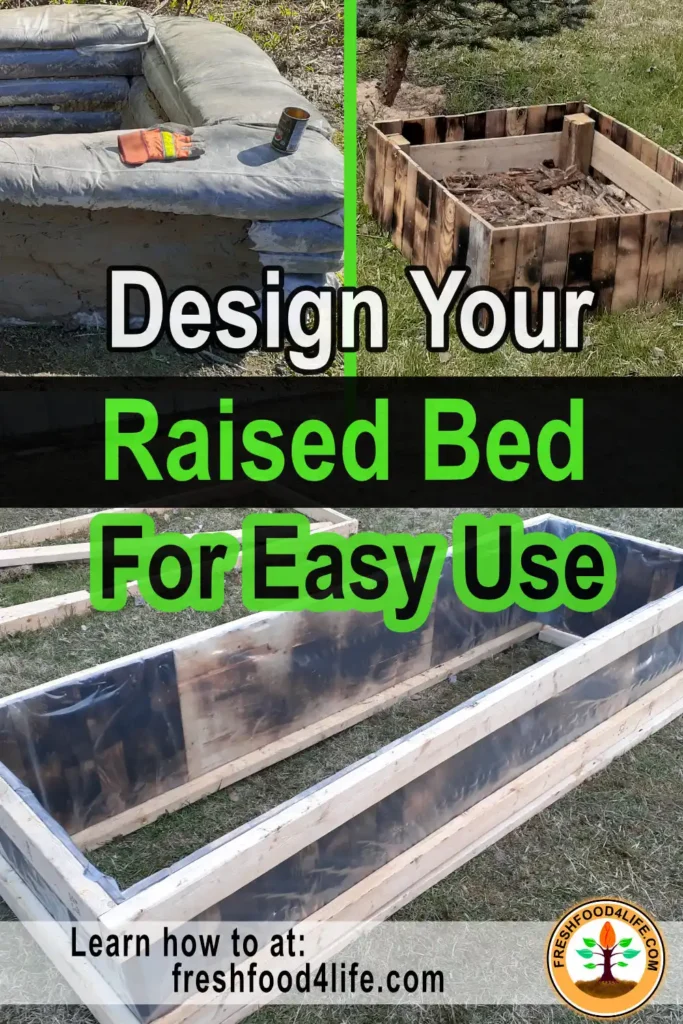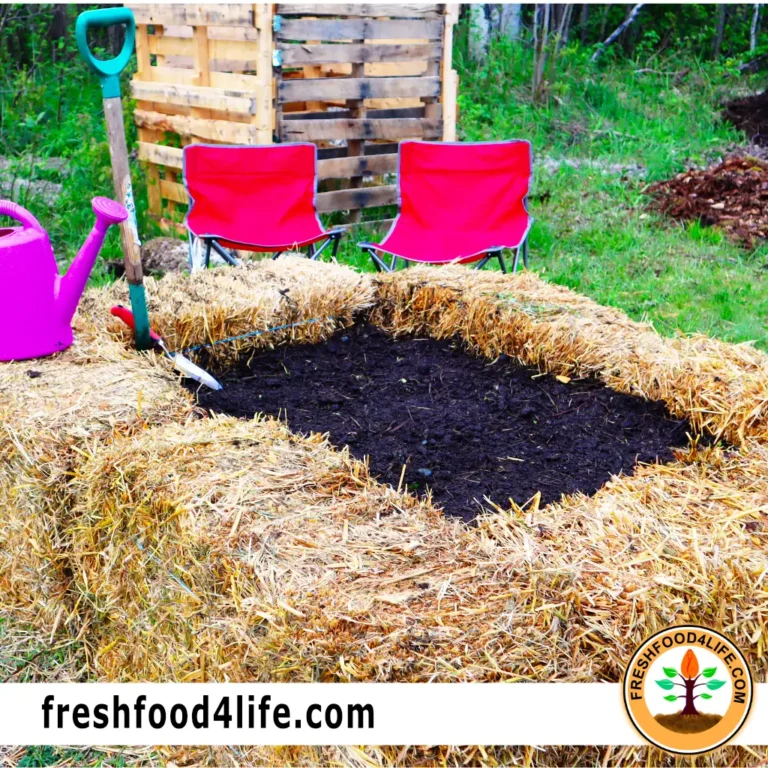Published: April 14, 2022 Last Updated: December 11, 2024
A raised bedRaised Garden Bed Raised Garden Bed: a freestanding, elevated planting area constructed above ground level. It can be made of wooden walls, faux wood, plastic, concrete, or metal walls. It can be used to grow plants such as vegetables, fruits, flowers, and herbs. The height of a raised bed can typically be from as low as 6 inches above the ground level to 48 inches above the ground. The taller raised garden beds might be referred to as a deep raised bed. is a fun and important part of the gardener’s toolkit. Gardening is part of our DNA. Humans were created to be caretakers of the earth! So from a creation standpoint, gardening restores humans to a spirituality that we lost long ago.

Table of Contents
Why Design a Gardenhome garden A designated area around a residential property where individuals cultivate plants, fruits, vegetables, or ornamental plants for personal use. It comprises a farming system that combines physical, social, and economic functions on the area of land around a family home, providing a sustainable source of food and other benefits for the household, extended family, and friends. Bed for Easy Use
People have been growing food in raised beds for hundreds of years. Raised beds are gardens that raise the soil level higher than the surrounding earth. The need for a solution to overcome a problem stimulates the ingenuity and creativity of the gardener. There is one major point to bear in mind: it does not matter how awesome your raised bed is, if you are never going to use it! That’s is why you are supposed to design your raised garden bedRaised Garden Bed Raised Garden Bed: a freestanding, elevated planting area constructed above ground level. It can be made of wooden walls, faux wood, plastic, concrete, or metal walls. It can be used to grow plants such as vegetables, fruits, flowers, and herbs. The height of a raised bed can typically be from as low as 6 inches above the ground level to 48 inches above the ground. The taller raised garden beds might be referred to as a deep raised bed. for easy of use in addition to the other factors.
As a planning tool in your gardening toolkit, raised beds are therefore the solution to problems of: 1) not being able to bend to garden, 2) limiting access of pests to the garden, and 3) having better soil management and control over the garden space, and 4) ease of use. They also allow for better drainage, more efficient use of garden space, and higher yields if done correctly. In essence, have a good plan.
Ease of Use Factors

Materials and Manpower
The type of materials you use to build your raised will be impacted by the manpower capability you have for the project. In the image above, this raised garden bed box was build using 2’x4’x8′ and 5/8″x16″ boards roughly 18 inches high. Each board was fired by hand and lightly sanded. Plastic waterproof material is used for the sides and to add an extra layer of insulation for the colder months. Building this type of box is very labour intensive and requires some manpower and a lot of time.
If you don’t have the time to hand fire each piece of wood nor the time to use so many individual pieces then this is not an ease of use design for you.
Why Use This Wood Design
The reason for selecting this design was to create a design that was unique and fashionable and for a low budget. The burnt wood look really gave the box some character. Most of the wood used for the sides were free pieces of recycled wood. As you can see in the image below it looked very nice when it was assembled.

Resources To Fill
The next challenge is placing the box in a location and filling it with earth and other growing material. If you were to purchased only earth to fill the box it could be expensive. Even though this is an investment in you and your raised bed will pay you back for many growing seasons, you still want to stretch your dollar where you can.
This is why it is recommended that you fill your box with layers of material. First you can put in pieces of rotten wood or decomposing wood followed by smaller bits of wood and leaves. You can get this from your backyard or a nearby park or forest. It will look like the image below. You can ask your neighbours for leaves too if you need extra material for the first layer inside the box.

Once you have filled your raised bed up to half way with the wood/organic material, then you can move on to filling your soil in the raised bed. As you have filled half the volume of your raised bed with organic material which will decompose over time, you can fill your raised bed with soil. Less soil means less manpower to put in the soil. It also means less cost for you as you’ll be spending less on the soil.
The raised bed is now built using an ease of use principle and you can continue to use it again and again.

Looking At Alternative Designs
Small Raised Bed
You might find that a 2 foot x 6 foot raised bed is too big for your garden area. Maybe you can only build in a smaller space. Then you again build something that is geared toward of ease of use. You can use a small wooden raised box and fill it will wood/organic material first and then fill the rest of the box with an earth mix. It could look like the image below.

Earth Bag Raised Beds
Maybe the skyrocketing cost of lumber has you thinking that buying wood to make a raised bed is too cost prohibitive. Well, remember that we used a combination of scrap wood and wood we purchased in order to keep the costs low. With that said, if you have more land like an acre of more, maybe you’d prefer to build a raised bed that will last a long time using earth-bags and plaster.

This is extremely labour intensive as it requires heaving lifting of a lot of earth in order to build the bed. It is cheap if you have land and the earth beneath your feet is free to use. The only cost will be the earth bags, and a little cement. You can also use sandbags as a good alternative to the earth bags. After you have built the garden bed to the desired height, you can then plaster around it using a cement and sand mixture.
Let’s look at some of the advantages and disadvantages of raised beds.
Raised Bed Advantages
#1 – Managed Space
A raised bed is simply a container of soil where we grow our seeds. This container could be made of any material such as old wine barrels, wood, concrete blocks, earth bags, plastic barrels, 5 gallon buckets, plastic per-fabricated raised beds, metal sheets, and more. The idea being that you want to allow the plant root system to have enough depth to grow well. It also has to be something easy for you to use to manage your growing space.
#2 – Ease of Access
With today’s baby boomers and the increasing number of people with some kind of injury, sometimes you want a garden space that is higher up so that bending is not necessary. For those with joint issues, back problems, or mobility challenges, a raised bed offers the ability to tend the garden at a higher level and helps overcome those challenges and bring joy to the gardener. It just makes it a little easier for you to use it.
#3 – Easy Weed and Pest Control
At the higher level, it is easier to pull the weeds out of the garden for those who hate bending and weeding. Higher raised beds can also present a challenge to garden critters that might want to eat your crops. Planting your crops close together also crowds out the space so that weeds are unlikely to be able to get a hold into the soil. Use metal screen to block rodents at the base and snails and slugs are challenged making it into the beds.
Now that we looked at the advantages, let’s look at the disadvantages.
Raised Bed Disadvantages
#1 – Harder to Work The Soil
Depending on your type of raised garden bed, it could be harder to dig the sides of the bed to work fertilizer or compost material into the soil. You can mitigate this disadvantage by planning the soil composition when building the bed. Then it’s just a matter of letting earthworms and compost do the work.
#2 – Water Loss / Too Much Drainage
There is the potential to lose much of the water because the raised bed is higher than the level of the soil around it. Water is lost by drainage and by evaporation. Again, this disadvantage is mitigated by planning. Before creating the bed, you could put down a layer of plastic about six inches under the ground under the raised bed. This is like the kind of plastic used in greenhouses. Shape it into a tray that leads into the base of your raised bed. Then water will collect there.
#3 – Expensive To Build
A raised bed does have some expenses involved in building it. However a well planned garden bed can yield many times its value in the food you will receive over the many years of its existence. Wood is expensive while earth from your yard is not. Concrete blocks may be expensive too. Find one method that suits your budget and space limitations. Also, look for sales at your local suppliers stores to reduce your costs. You may have to buy materials in fall to build the bed next spring.
#4 – Replacement / Maintenance Costs
The maintenance cost relates to the material used. Wood may require you to do more maintenance than concrete. Again, look at the initial costs and the lifespan of the box. Consider your immediate and long term costs before building it so that you get the most bang for your buck.
For certain, a raised bed is an investment in your food empowerment for the future. I built one raised bed back in 2011 and had to replace the wood for the raised bed in 2014. But I was able to get some great yields for my food. If I had used concrete, I wouldn’t have to worry about replacement but I wanted the ease of wood in case I needed to move the raised bed to another location. I didn’t move it.☺
It’s all about your design, your space, and your needs. Every bit of food you get from your garden is less food you need to buy from the store. Get your growin’ on!
My book, Fresh Food4Life:The Case For Taking Back Control of Your Food And Empowering Your Family And Community, is a powerful eye-opener you will want to read. Until next time, continue to learn and grow.

